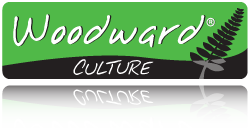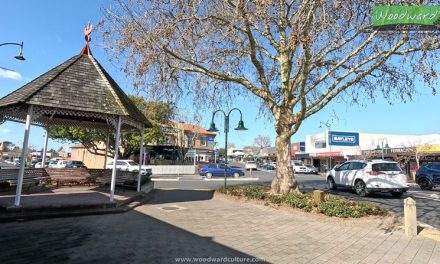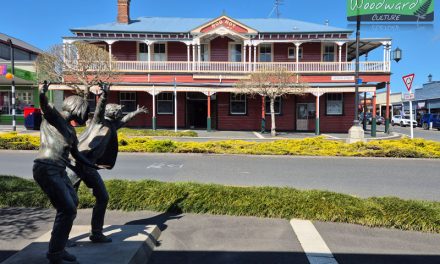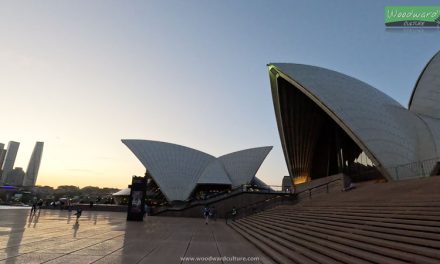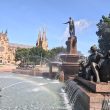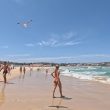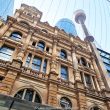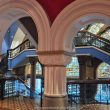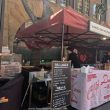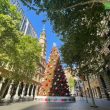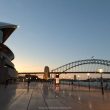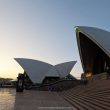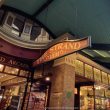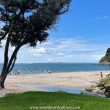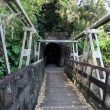In this 4K Walking Tour of Wellington, we start outside the famous Wellington Cable Car which we take to the top of the hill for a fantastic view of the city. We then quickly visit the Cable Car Museum and surrounding buildings (including Space Place and a cannon) and then walk down to the city via the Wellington Botanic Garden. We reach The Beehive (The Executive Wing of Parliament) and then walk along Lambton Quay (Wellington’s main downtown street) until we get to the Wellington Cable Car entrance where we started.
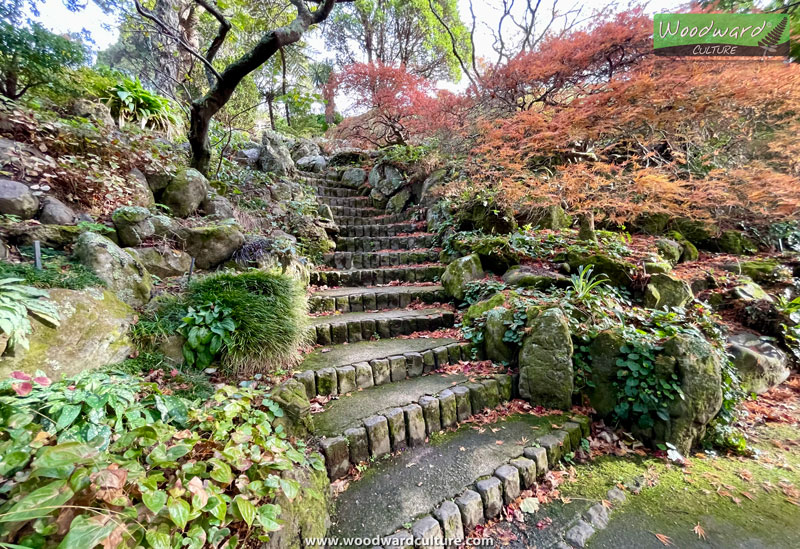
What makes this walking tour so special is that you will see the beautiful Autumn colours as we walk through the garden. Since this was recorded during the week AND outside of school holidays, you will notice that the streets are a lot quieter than our other video of Lambton Quay during summer. This time we walk on the other side of the road so that you have another view point.
Use headphones for the best immersive experience while listening to the sounds of daily life in Wellington.
Highlights of the Wellington Walking Tour
Here are some of the highlights of this walking tour that you will see in the 4K video. You can find the timestamps to each of these attractions in the description of the video on YouTube.
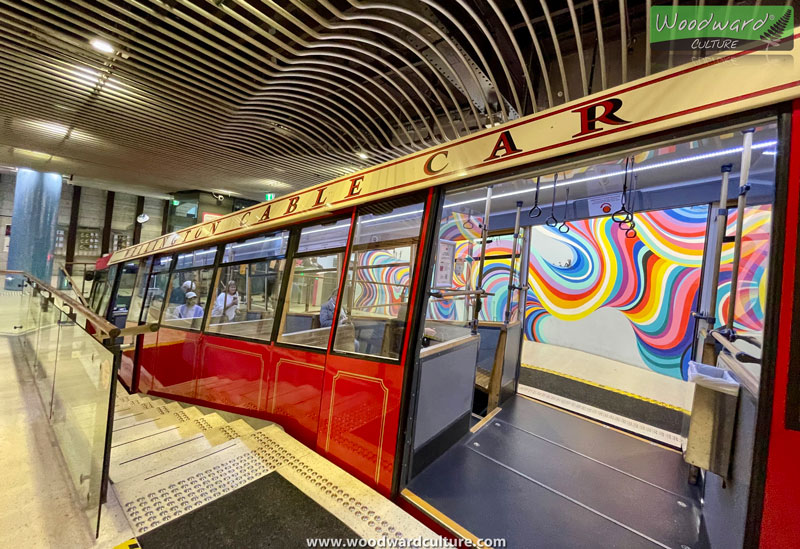
Wellington Cable Car
Take the 5-minute ride from the heart of Wellington City centre, past the hillside terraced houses of Kelburn, to the lookout with one of the best “postcard” views of Wellington.
On the way up (or down), there are two tunnels that have light displays in the top half of them. The colours change for special holidays and events like Green for Saint Patrick’s Day and Pink for Breast Cancer Awareness.
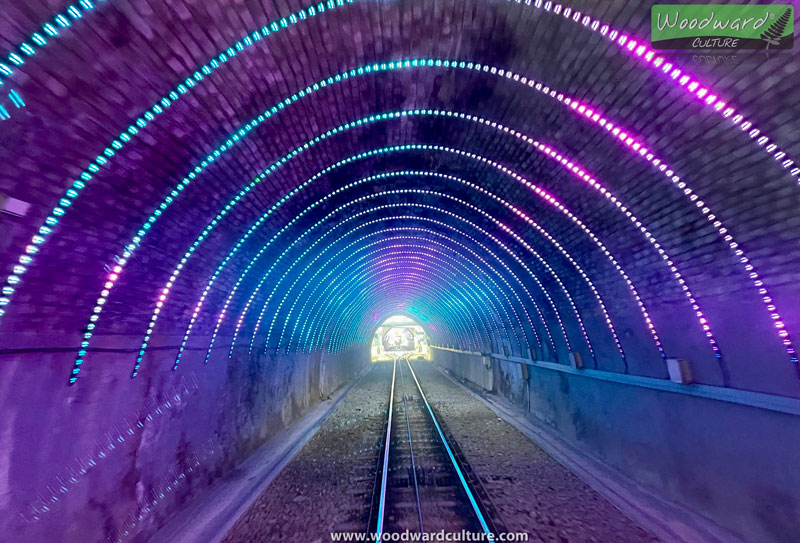
At the top station, there are two displays containing original costumes used in the Lord Of The Rings movies.
More details (hours, prices, etc.) here: Wellington Cable Car.
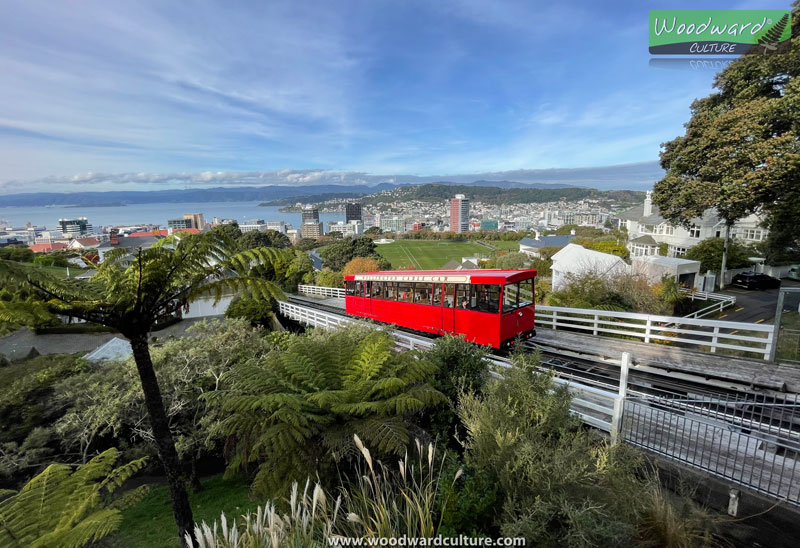
Wellington Cable Car Museum
The Cable Car museum, located in the original winding house for the cable car system, is set over two floors. When you first enter the museum you immediately see a red cable car that was used from the 1950s to the late 1970s. Pay attention to the design of the outside seats which are on an angle. On the lower floor (which many people miss) is a cable car that was used in the early 1900s. You will also find the original winding machine and other historic items. Free General Admission. More details here: Cable Car Museum.
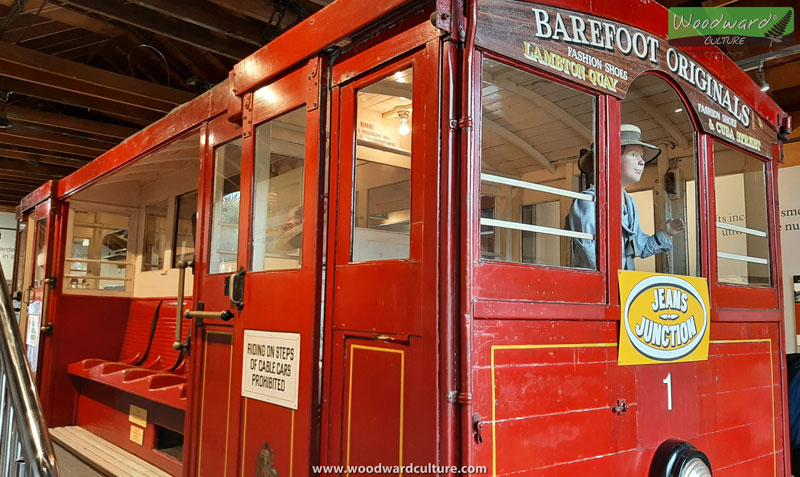
The Kowhai Walk
This walk takes you through two historic observatory reserves. Situated on a ridge giving stunning views of the Botanic Garden and the city, the reserves contain a range of buildings and structures that trace the development of astronomy and related sciences in New Zealand.
Follow the kowhai (native yellow flower) tiles laid in the path. It is a circular walk that takes 10-15 minutes to complete.
Space Place
Space Place is a place about … um, space. Well, more specifically stories about New Zealand skies through multimedia exhibits, interactive galleries and a full-dome planetarium. Visit their website for more information: Space Place.
Sundial of Human Involvement
This is an analemmatic sundial, a horizontal type that is not commonly found. It uses a series of fixed points located around the circumference of an ellipse. A person is used to produce the shadow by standing on the time of year marked on a figure of eight in the centre of the ellipse.
It is accurate to within a few minutes and no corrections have to be made for daylight saving, because the bronze hour indicators on the granite columns are moved twice a year.
Meteorological Observatory
A fenced enclosure operated by New Zealand’s National Meteorological Service (MetService) to collect weather observations. A continuous record of daily rainfall and temperatures in Wellington has been kept from this observation site since January 1928.
The Krupp Gun
This gun (now overlooking the city) was manufactured in 1907 and remained in service in the Germany Army during the First World War (1914-1918). The crest of the Prussian Foot Guards Artillery Regiment can be seen on the top surface of the barrel.
The gun was captured in France in September 1918 by the New Zealand Division. At the end of the First World War, this gun (and many others that were captured) were sent to New Zealand as war trophies. It is thought to be the only one of its kind remaining from about 190 that were manufactured.
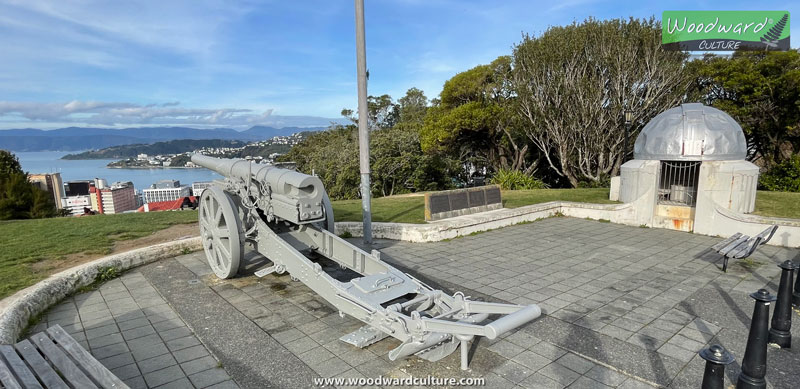
Dominion Observatory
Government timekeepers worked here to track the time and relay that information to ship crews, railway workers, government officials, and the public. In the early years of the service, timekeepers were trained astronomers who calculated the time by observing the sun, starts, and planets. Slots built in the walls of the octagonal room allowed them to peer through telescopes from inside.
Designed in an Edwardian Baroque style, this building was opened in 1907. Seismological recording started here in 1916 and today automated equipment continues to measure seismological activity.
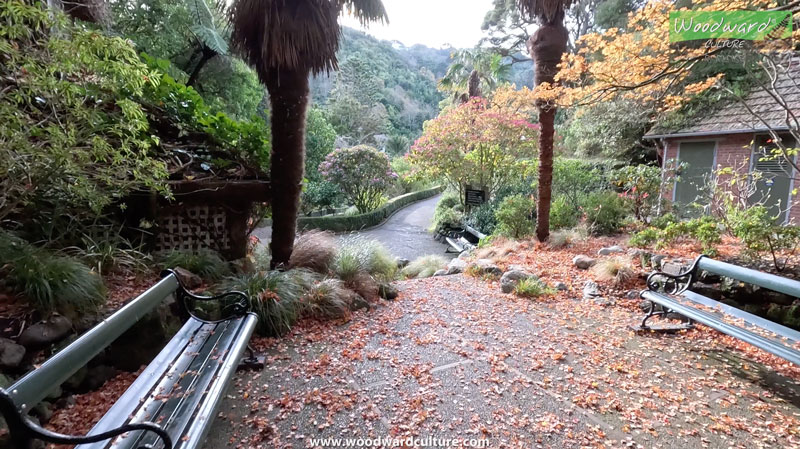
Wellington Botanic Garden
Established in 1868, the Wellington Botanic Garden has 25 hectares (62 acres) of specialised plant collections, a protected native forest and great views over Wellington City.
Some of the main points of interest in the Wellington Botanic Garden include:
Treehouse Visitor Centre and Shop – This information centre in the middle of the Botanic Garden feels like you are in the trees. It has a great view of parts of the garden and surrounding area. This is a store where you can buy a wide range of NZ gifts. You will notice The Bee Lady sculpture when you arrive.
Duck Pond – A favourite part of the main garden. You can watch ducks swim in a little lake with a turreted gazebo at one end. Just around the corner from the Duck Pond is a “Fairy Garden” with little houses and decorations.
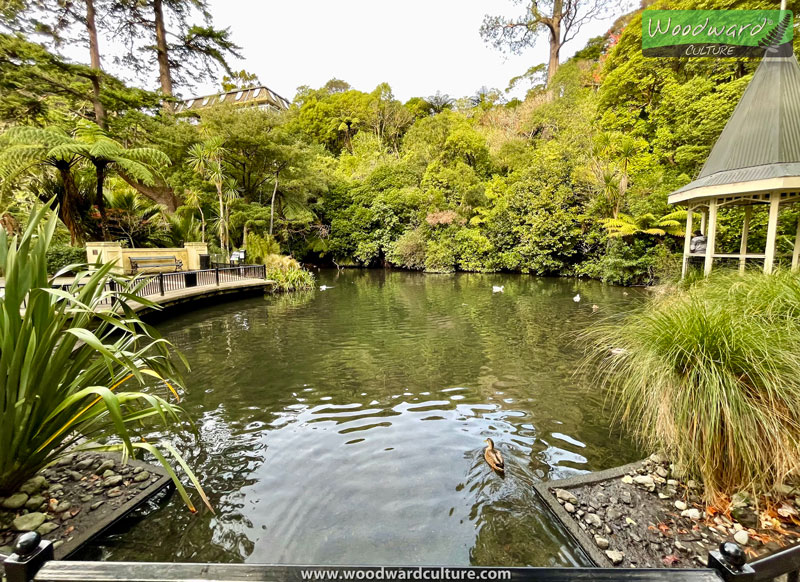
Begonia House – glasshouses for tropical and temperate displays (including orchids).
Lady Norwood Rose Garden – 110 rose beds with over 300 varieties of roses.
The Discovery Garden – a living classroom where curious minds can explore and learn about the natural world. It is only open to the public when schools are not visiting.
The Soundshell – This is a stage for mini concerts and performances with a grass lawn in front of it.
Children’s Play Area – A play area for children that includes dual flying foxes (great for races) slides and other fun activities in a large fenced area.
Glow Worms – Yes, there are some glow worms alongside the stream from the Duck Pond up to Glen Road. They are only visible at night and easier to see in spring after some rain.
Founders’ Gates – The main entrance to the Wellington Botanic Garden.
You can learn more here about the Wellington Botanic Garden.
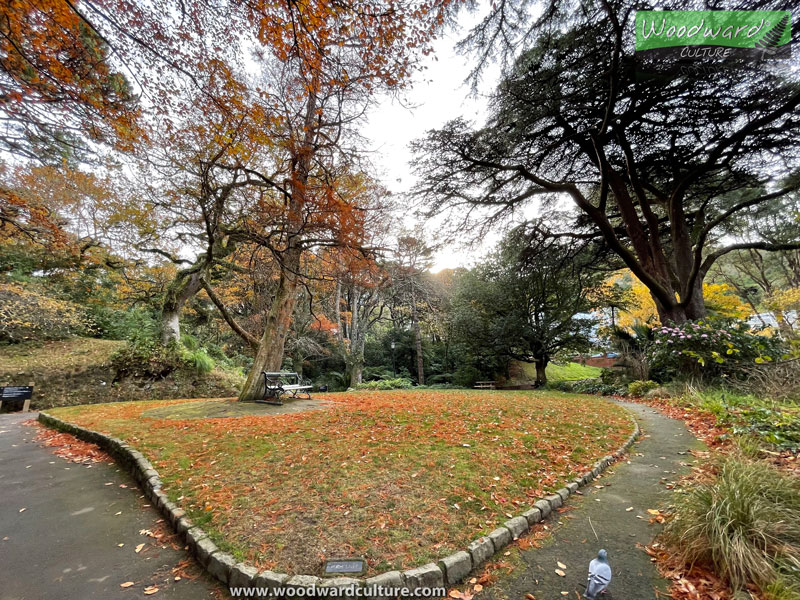
From Founders’ Gates, you walk down Glenmore Street (which becomes Tinakori Road) until you get to Bowen Street. Notice the interesting style of the houses on the other side of the road as you go down the street. There isn’t much to see along Bowen Street until you get close to the centre. Look out for the Māori art mural on the wall opposite the footpath. Just after the mural you will come across The Beehive.
The Beehive
The Executive Wing of the New Zealand Government commonly known as “The Beehive”. It was completed in 1979.
The Wellington Cenotaph
The Wellington Cenotaph commemorates New Zealanders who died in World War I and World War II. The two bronze lions were added in commemoration of World War II.
You will hear the sound of trickling water around the cenotaph. No, you’re not going crazy, that sound is coming from speakers in the ground.
Lambton Quay
Lambton Quay is considered the main street, the heart of the central business district of Wellington. This time we walked on the other side of the road for the video so that you have another view point.
We will go past the Old Public Trust Building which was opened in 1909 and walk through Midland Park (where office workers like to hang out at lunchtime). Just before entering this small park you will notice sculptures of shells and a large metal sculpture of a woman. This sculpture, called Woman of Words, celebrates the life and work of Katherine Mansfield. The steel has been cut with quotes from her journals and short stories. At night this sculpture is lit up like a lantern.
We go to the iconic MLC building completed in 1940. In front of the building is a beautiful tree with yellowy-brown autumn leaves (in this video) and a kinetic sculpture comprising of four rotating ‘pebbles’ called Protoplasm.
Then we cross the street and head back to the lower entrance to the Wellington Cable Car where we first started this 4K walking tour.
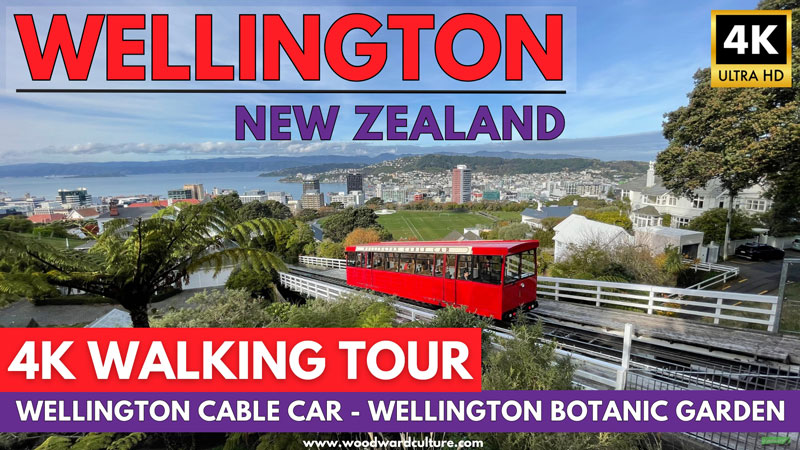
More to see and do in Wellington
See our other 4K walking tours of Wellington:
Wellington waterfront and Oriental Bay Walk (1 hour)
Parliament Buildings, Lambton Quay, Cuba Street – Wellington Walk (35 minutes)
Cuba Street to Mount Victoria – Wellington 4K Walking Tour (50 minutes)
